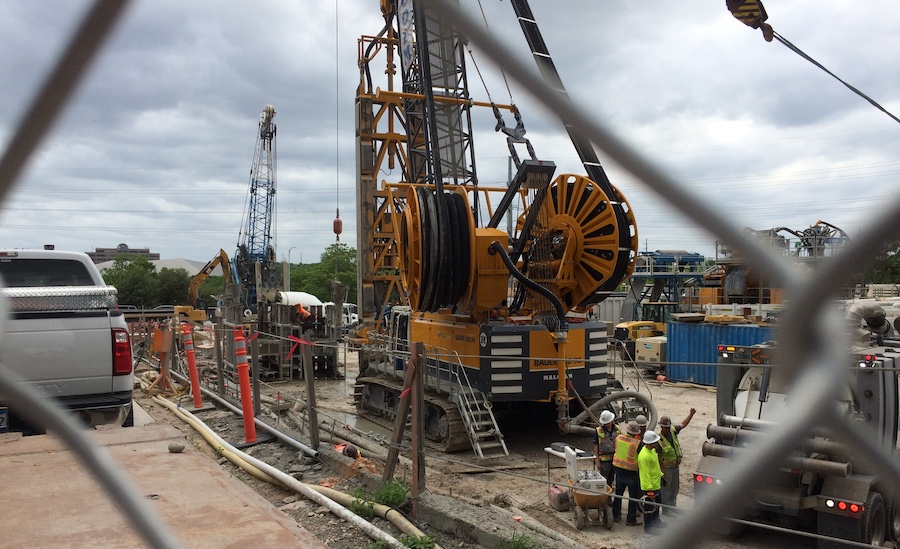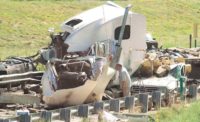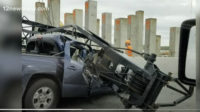Coronavirus and Construction
Study: In COVID's First Wave, 'Essential' Construction in Texas Escalated Hospitalizations

A 2018 construction project in Austin, Texas, before the pandemic. Photo: Richard Korman for ENR
On March 24, as the coronavirus pandemic spread, the city of Austin, Texas enacted a stay home-work safe order that shut down any non-essential construction. But a week later, Gov. Greg Abbott (R), said all construction in the state should go on, so Austin's commercial and residential projects reopened.
City Mayor Steve Adler commissioned a research team at the University of Texas medical school in Houston to explore the implications of keeping construction sites open. Researchers determined by examining statistics and mathematical modeling that keeping those projects open could worsen the virus spread.
Since then, the research team has found real-life examples and evidence that keeping construction workers on the job during the pandemic increases not just potential virus spread, but also the risk of hospitalizations.
According to its study, Latino construction workers, who have higher incidence of respiratory and other illnesses, are especially susceptible
The research, described in a recent article on the website of the Journal of the American Medical Association, has fresh relevance, with coronavirus outbreaks reaching peaks in many states and shutdowns on construction sites controversial in the spring.
Construction workers have long been known to have higher incidence of health problems and comparative aversion to flu shots.
A research study several years ago showed that construction craft workers are less likely than other types of workers to have themselves vaccinated for seasonal flu. In May, the news bulletin of the union-funded Center for Construction Research and Training pointed out that 1.4 million construction workers, or 12.3% of the total, were 60 or older. Nearly one in five had a respiratory disease, one in five were smokers, and altogether nearly six out of 10 had at least one factor that put them “at higher risk of severe illness from COVID-19, the center reported in its bulletin.
Using data on hospitalizations, the University of Texas researchers modeled statistics about COVID-19-related hospitalizations and simulated different scenarios that varied the size of the construction workforce and level of worksite transmission. After varying the simulations 500 times for each scenario, the association between continued construction work and hospitalizations was compared with actual hospital data from central Texas through August.
The risk to construction workers of allowing unrestricted work through that period increased the risk from .38 per 1,000 residents to 1.5 per 1,000 residents, the article authors wrote. The risk to construction workers themselves grew from 0.22 to 9.3 per 1,000 workers --almost five times greater.
Clusters Identified
The Austin metro area provided plenty of opportunity for statistical study. As of mid-May, the researchers showed, city health officials had identified 19 clusters of at least three confirmed COVID-19 cases at construction jobsites. By mid-July, 23 more had emerged. The research team found that in hospitalization case reports through Aug. 20, 77 of 515 individuals aged 18 to 64 years listed their occupations as construction.
Noting the high percentage of Latino construction workers, and the five-fold increase in hospitalization due to COVID-19, the authors wrote that "as the United States navigates relaxing and enacting policies to mitigate the COVID-19 pandemic, communities should recognize the disproportionate burden of illness already experienced by workers in low-paying, high contact industries."
The authors suggest that "closing semi-essential industries during pandemic waves, enhancing workplace safety policies and providing paid sick-leave could offset these risks" and prevent further disparities in the sicknesses and deaths during the pandemic.





